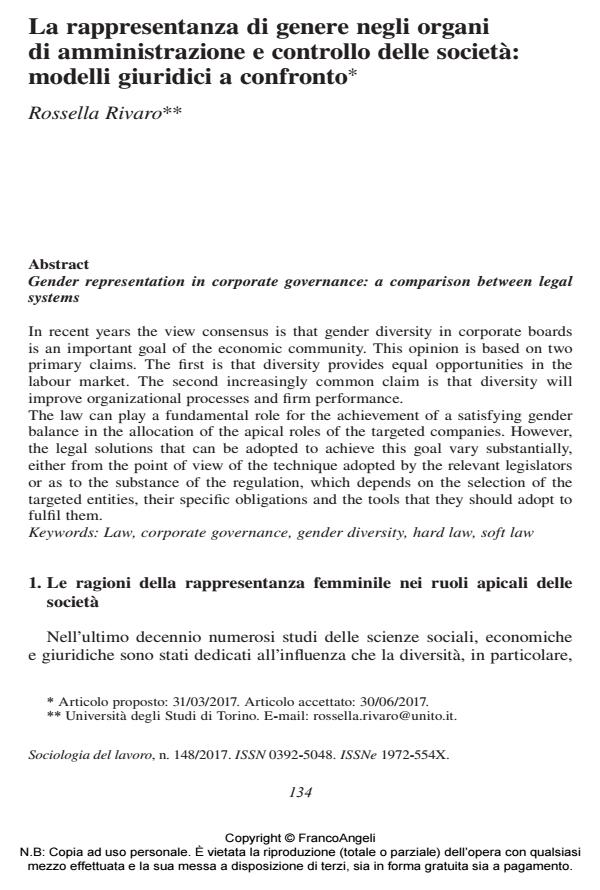Gender representation in corporate governance: a comparison between legal systems
Journal title SOCIOLOGIA DEL LAVORO
Author/s Rossella Rivaro
Publishing Year 2017 Issue 2017/148
Language Italian Pages 16 P. 134-149 File size 115 KB
DOI 10.3280/SL2017-148008
DOI is like a bar code for intellectual property: to have more infomation
click here
Below, you can see the article first page
If you want to buy this article in PDF format, you can do it, following the instructions to buy download credits

FrancoAngeli is member of Publishers International Linking Association, Inc (PILA), a not-for-profit association which run the CrossRef service enabling links to and from online scholarly content.
In recent years the view consensus is that gender diversity in corporate boards is an important goal of the economic community. This opinion is based on two primary claims. The first is that diversity provides equal opportunities in the labour market. The second increasingly common claim is that diversity will improve organizational processes and firm performance. The law can play a fundamental role for the achievement of a satisfying gender balance in the allocation of the apical roles of the targeted companies. However, the legal solutions that can be adopted to achieve this goal vary substantially, either from the point of view of the technique adopted by the relevant legislators or as to the substance of the regulation, which depends on the selection of the targeted entities, their specific obligations and the tools that they should adopt to fulfil them.
Keywords: Law, corporate governance, gender diversity, hard law, soft law
- Board evaluation process in Italy: How far is it from the UK standard? Maria Gaia Soana, Giuseppe Crisci, in Corporate Board role duties and composition /2017 pp.6
DOI: 10.22495/cbv13i3art1 - Gender diversity in the workplaces: Regulatory framework, public policies, and a possible future scenario Giuseppe Calabrese, Rosario Bianco, Elaheh Anjomrouz, in Corporate Governance and Organizational Behavior Review /2023 pp.27
DOI: 10.22495/cgobrv7i3p3
Rossella Rivaro, La rappresentanza di genere negli organi di amministrazione e controllo delle società: modelli giuridici a confronto in "SOCIOLOGIA DEL LAVORO " 148/2017, pp 134-149, DOI: 10.3280/SL2017-148008